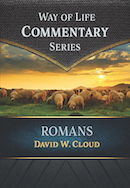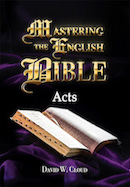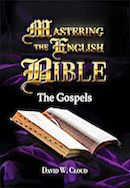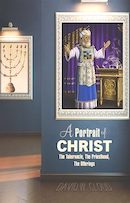866-295-4143, fbns@wayoflife.org
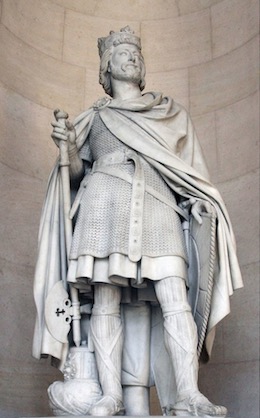
Charles Martel
(19th century sculpture)
a. Charles Martel (680-741) ruled the kingdom of the Franks (Francia, Frankia) that was established in 496 by Clovis I, a convert to Catholicism.
(1) Francia consisted of subkingdoms over which Martel had gained nominal control. The historian Isidore said he was “a mighty warrior from his youth and trained in all the occasions of arms.”
(2) In the early days, the Franks fought mostly on foot but were heavily armed.
- They were heavily armored and used double-edged swords, daggers, javelins, and two type of axes, one for striking and one for throwing.
- The throwing axe was called the francisca (franciska). It was a deadly weapon with a short handle and a heavy cutting head 5-6 inches long. As they approached within 40 feet of the enemy, on signal the Franks would throw the franciscas to shatter shields, wound and kill opposing soldiers, and disrupt the enemy line. The fransisca was used until the time of Charles Martel.
- They also used bows that were six or seven feet long.
(3) In 732, the Muslim armies entered Francia under the leadership of Caliph Abdul Rahman, who “promised to stable their horses in St. Peter’s at Rome” (Trifkovic, The Sword of the Prophet, p. 96). As they made their way north, the Muslims “burned churches and slaughtered the population” (Susan Bauer, The History of the Medieval World).
(4) Martel joined forces with Odo of Aquitaine and with 30,000 men they defeated an invading army of 80,000 or more Muslims at the Battle of Tours on Oct. 10, 732.
(5) The Muslims underestimated their enemy. Sixteen years earlier, Musa, the first caliph, said the Franks are “brave and impetuous in the attack, but cowardly and craven in the event of defeat; never has a company from my army been beaten” (Raymond Ibrahim, “The Battle of Tours,” National Review, Oct. 12, 2013).
(6) Martel picked the field of battle wisely and was patient.
- He chose wooded high ground where the Muslim cavalry would be less effective and waiting patiently over a period of days to force the Muslims to attack.
- An Arab historian said they were “filled with wrath and pride,” which is a recipe for disaster.
- When the Muslims assaulted them in “wild headlong charges,” the Franks did not panic but held their phalanx position “[S]taying as motionless as a wall, they were like a belt of ice frozen together, and not to be dissolved, as they slew the Arab with the sword.” The Franks used their shields and heavy armor to form a wall of protection. This discipline in battle is why the Roman legions had been successful on the same terrain centuries earlier.
- After Caliph Rahman was killed, his army retreated back over the Pyrenees mountains, destroying and looting as they went.
(7) This was a major turning point in history, halting the advance of Islam into western Europe. As we have seen, in 718, fourteen years earlier, the Muslims had been defeated in their attempt to destroy Constantinople, thus being stopped from conquering Europe from the east.
(8) It was the Battle of Tours that earned Charles his nickname Martel or Hammer.
(9) In 736, Charles defeated a large Muslim invasion force that came by sea and landed in Narbonne.
- This was probably the first time that heavy armored cavalry with stirrups were used in Europe. It was the dawn of the age of the knights.
b. In 759, Pepin III (Pippin III or Pepin the Short), son of Charles Martel, captured Narbonne and drove the Muslims out of France.
c. In 801, Carolus Magnus (Charlemagne), son of Pippin III and grandson of Martel, captured Barcelona and established a buffer zone against further Muslim encroachment. This zone was the southwestern border of the Frankish Kingdom. A year earlier, Charlemagne had been anointed emperor of the Holy Roman Empire by the pope. He has been called “the father of Europe.”
- Receive these reports by email
- www.wayoflife.org
______________________
Sharing Policy: Much of our material is available for free, such as the hundreds of articles at the Way of Life web site. Other items we sell to help fund our expensive literature and foreign church planting ministries. Way of Life's content falls into two categories: sharable and non-sharable. Things that we encourage you to share include the audio sermons, O Timothy magazine, FBIS articles, and the free eVideos and free eBooks. You are welcome to make copies of these at your own expense and share them with friends and family. You may also post parts of reports and/or entire reports to websites, blogs, etc as long as you give proper credit (citation). A link to the original report is very much appreciated as the reports are frequently updated and/or expanded. Things we do not want copied and distributed are "Store" items like the Fundamental Baptist Digital Library, print editions of our books, electronic editions of the books that we sell, the videos that we sell, etc. The items have taken years to produce at enormous expense in time and money, and we use the income from sales to help fund the ministry. We trust that your Christian honesty will preserve the integrity of this policy. "For the scripture saith, Thou shalt not muzzle the ox that treadeth out the corn. And, The labourer is worthy of his reward" (1 Timothy 5:18). Questions? support@wayoflife.org
Goal:Distributed by Way of Life Literature Inc., the Fundamental Baptist Information Service is an e-mail posting for Bible-believing Christians. Established in 1974, Way of Life Literature is a fundamental Baptist preaching and publishing ministry based in Bethel Baptist Church, London, Ontario, of which Wilbert Unger is the founding Pastor. Brother Cloud lives in South Asia where he has been a church planting missionary since 1979. Our primary goal with the FBIS is to provide material to assist preachers in the edification and protection of the churches.
Offering: Offerings are welcome if you care to make one. If you have been helped and/or blessed by our material offerings can be mailed or made online with with Visa, Mastercard, Discover, or Paypal. For information see: www.wayoflife.org/about/makeanoffering.html.


